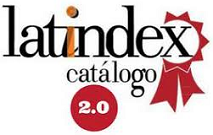An algae-clay technology reduces mycotoxin exposure, and supports intestinal morphology and liver oxidative stress of broiler fed a diet naturally contaminated with DON
Keywords:
Mycotoxins, Algae, Intestinal morphologyAbstract
The aims of this study were to assess the effect of an algae-clay technology (decontaminant) on the availability of mycotoxins (deoxynivalenol; DON, ochratoxin A; OTA, and aflatoxin B1; AFB1) in a toxicokinetic model; and to evaluate the effect of this decontaminant on the production performance, intestinal morphology, and liver oxidative stress, of broilers fed a naturally DON-contaminated diet. In experiment 1, 27-day-old male chickens (n=16) received an oral bolus containing either the mycotoxins (0.5 mg DON/kg BW, 0.25 mg OTA/kg BW, and 2.0 mg AFB1/kg BW) alone (n=8) or combined with the decontaminant (2.5 g/kg feed; n=8). Plasma samples were taken for 24 h post-administration for DON-3-sulphate, OTA, and AFB1 quantification. The decontaminant decreased the relative bioavailability of DON (40 %), OTA (44 %), and AFB1 (64 %). In experiment 2, one-day-old male Ross broilers (n=600) were divided into three treatments with ten replicates (20 birds/rep). The chickens were fed a control diet with negligible levels of DON (0.2 mg/kg) or diets naturally contaminated with significant levels of DON (2.9 mg/kg), either supplemented or not with the decontaminant (2 g/kg diet). Jejunum villus damage was observed on d 28, followed by villus shortening on d 37 in chickens fed the DON-contaminated diet. This negative effect was not observed when the DON contaminated diet was supplemented with the decontaminant (table 1). On d 37, the mRNA expression of glutathione synthetase was increased in the liver of broilers fed DON-contaminated diet. However, its expression was similar to the control when the birds were supplemented with the decontaminant. In conclusion, the algae clay reduced the systemic exposure to DON, OTA, and AFB1 in a toxicokinetic model. This can be attributed to the binding of the mycotoxins in the gastrointestinal tract. Moreover, dietary contamination with DON (~3 mg/kg) did not impair production performance but had a negative impact on chicken intestinal morphology and the liver redox system. When the algae-clay technology was added, the harm caused by DON was no longer observed. This correlates with the results obtained in the toxicokinetic assay and can be attributed to a decreased absorption of DON.
Downloads
Published
How to Cite
Issue
Section
License
Copyright (c) 2025 Sociedad de Medicina Veterinaria del Uruguay-Facultad de Veterinaria, Universidad de la República

This work is licensed under a Creative Commons Attribution 4.0 International License.











